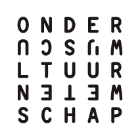Search results
Sort results
Select author
Refine search results
Select genre
Select tag
Results of the Survey ‘The State of the Dutch Language’ 2021
8 November 2021
In social settings, on social media, and at work, the Dutch language is doing well. But the use of Dutch demands continued support in higher education, and the use of dialects and regional languages deserves further attention too.
Watch the Amazing Results of the Restored Ghent Altarpiece
18 December 2019
The central panel of The Adoration of the Mystic Lamb, also known as the Ghent Altarpiece, shines like never before. The second stage of the restoration of Van Eyck’s masterpiece has come to an end. The restoration stripped away the 16th-century overpainting to reveal an abundance of fine details.
Sharing a language is not necessarily sharing a view of culture
9 July 2025
In 1995, the Netherlands and Flanders signed a cultural treaty, but twenty years later, the commission responsible for implementing the treaty threw in the towel. So, what is the state of Flemish-Dutch cooperation now? Four experts discuss the sense, vitality and shortcomings of cultural exchange in
Willem Writs, a Driving Force of Dutch Culture in 18th-Century Amsterdam
6 May 2025
The Dutch had little sense of culture, and that had to change, according to the country’s first cultural entrepreneurs. Influenced by the new Enlightenment ideals, they established numerous cultural and scientific societies in the eighteenth century. Willem Writs, inventor and founder of Felix Mer
And Then There Were Three: Belgium’s Race for the 2030 European Capital of Culture
4 April 2025
In 2030, a Belgian city will be named European Capital of Culture alongside a city in Cyprus. The next few months will be exciting for Leuven, Molenbeek and Namur, the three cities still contending for the title after Bruges, Ghent and Kortrijk were dropped. The verdict will be announced in Septembe
How Going Dutch Can Save a Billion Euro
28 November 2024
A decade ago, three London neighbourhoods decided to turn themselves into ‘Mini Hollands’. The councils persuaded local people to take up walking and cycling – and in doing so saved the health budget roughly £1 billion.
The Afterglow of the Van Gogh Comet
21 November 2024
In a short life and an even shorter existence as an artist, Vincent van Gogh drew and painted an extensive oeuvre that pushed art history in new directions. The glow of the comet that was Van Gogh continues to twinkle, as is evident in three books that reveal new aspects of his life: his drawings st
”Slaughtered” for the Exam: Stories From a Teacher of Dutch as a Second Language
8 October 2024
Dutch is a beautiful language. But it can seem difficult and sometimes downright illogical to foreign-language newcomers. How do you inspire them to love our language? Joachim Stoop, a teacher of Dutch as a second language for twenty years, shares his experiences.
Discovering 16th Century Antwerp While Pinching Your Nose
23 September 2024
When it comes to history, we know sixteenth-century Antwerp mainly through the gaze of merchants, artists and intellectuals. But who else was walking around there? What did the international city sound like? How did it smell? With the cathedral as the focal point, Wendy Wauters describes the city on
‘Revolusi’ Corrects the Dutch Colonial Self-Image of Indonesia
5 September 2024
In Revolusi: Indonesia and the Birth of the Modern World, David van Reybrouck documents the Dutch colonial involvement in the world’s largest archipelago from the early seventeenth century until independence in late 1949. Using his literary talent, the author combines historical research and journ
This Is How Our Cities Are Tackling the Problem of Overtourism
27 June 2024
The tourism industry in Belgium and the Netherlands has long since recovered from the COVID-19 pandemic, with visitor numbers even surpassing those of pre-2020. However, not everyone is happy with this development, as some destinations are now facing overtourism. How are the Low Countries addressing
FAQ
How can we help you? Welcome to our helpdesk We are eager to assist you as soon as possible Browse this page, and you might find the answer to your question here! Still need help? Send us a message through our contact page. One of our staff members will assist you as soon as possible.



